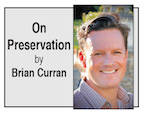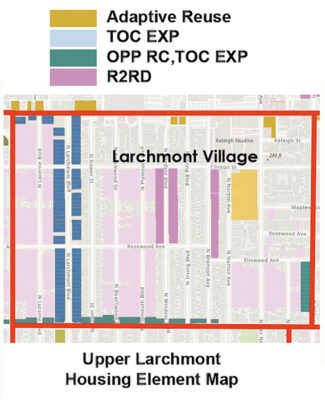City’s Housing Element threatens our historic districts
 In October the governor signed 56 new housing bills in an effort to address California’s housing crisis. The majority of these only continue to chip away at the issue through making construction a little bit easier here, offering an incentive there, or by enacting greater tenant protections, all in the elusive pursuit of bringing the cost of housing down.
In October the governor signed 56 new housing bills in an effort to address California’s housing crisis. The majority of these only continue to chip away at the issue through making construction a little bit easier here, offering an incentive there, or by enacting greater tenant protections, all in the elusive pursuit of bringing the cost of housing down.
In a statement of overheated triumph, Sen. Scott Wiener declared, “The era of saying no to housing is coming to an end. We’ve been planting seeds for years to get California to a brighter housing future, and today we’re continuing strongly down that path.”
Flood of development
While there may be truth to these sentiments, Wiener knows that the real silver bullet he is seeking that will supposedly unleash a flood of development lies in widespread upzoning and the dismantling of the California Environmental Quality Act (CEQA).

MAJOR DENSIFICATION following tear-downs of houses is what is proposed for residences in the LVNA community north of Beverly Boulevard.
Map courtesy of United Neighbors
While kneecapping CEQA may be in the power of the state, upzoning in Los Angeles remains, for now, the purview of the Los Angeles Department of City Planning. In the midst of the pandemic, the department dutifully laid the groundwork for major changes in the city’s zoning, while complying with and surpassing the state’s Regional Housing Needs Allocation (RHNA) in the city’s recent Housing Element revision. Luckily for the department, most if not all of its public hearings were held online, aided by the use of opaque maps and statements of strident social justice language, and the changes passed with little notice.
Housing Element
For preservationists such as myself, the Housing Element was of little interest until alarming aspects of the plan became clearer as advocates, such as Fran Offenhauser of Hollywood Heritage, began to point out that the Housing Element maps indicated upzoning large areas of Hollywood Boulevard — including parcels occupied by historic theaters such as Grauman’s Chinese — even before the plan was approved.
This conflict was most recently highlighted in presentations by Cindy Chvatal-Keane and Cathy Roberts before the Greater Wilshire Land Use Committee and the GWNC Board on behalf of United Neighbors, a coalition of neighborhood residential groups throughout California.
Their presentation, besides highlighting the shocking chasm by a factor of five between the number of units RHNA requires and those suggested by the planning department, also displayed a series of maps which showed areas in La Brea Hancock, Sycamore Square, Brookside and Larchmont as targeted for expanded use of the Transit Oriented Communities (TOC) mechanism, which allows for greater densities close to identified transit corridors. While the draft Housing Element excludes Historic Preservation Overlay Zones (HPOZs) and Historic Cultural Monuments (HCMs) from consideration for development, it does not exclude National or California Register districts or SurveyLA identified districts.
This means that, if enacted, the cottages of La Brea Hancock, the historic houses of Sycamore Square and the terraces of Brookside could make way for high density development. As it stands now, the city continues to ban the creation of new HPOZs, interpreting state law SB330’s prohibition of “subjective design standards” to include Preservations Plans, which govern development in HPOZs. As I have stated in other articles, this has led to a surge in the preparation of applications for National Register status for those would-be HPOZs in an effort to at least be covered as historic resources for the purposes of CEQA.
While the majority of the suggested changes to zoning will require an updated Wilshire Community Plan to be put into place, expanded TOC zones could potentially be much easier to adjust through the increase in transit service. While Mayor Bass “believes that many single-family-home neighborhoods … should remain off-limits for greater density,” and Councilmember Katy Yaroslavsky stated at a recent GWNC Board meeting, “I don’t support upzoning single-family neighborhoods,” CD 13’s Hugo Soto-Martinez has not given such assurances. His recent motion, which proposes changes to the “Public Facilities Zone” zoning and land use designations applied to many city-owned properties to ease the construction of affordable housing, could potentially affect single-family neighborhoods and historic districts if those are not specifically removed from consideration.
Without resolute support from our elected city representatives, we and our historic neighborhoods remain at the mercy of the cold maps and hard numbers of the Housing Element and the Planning Department staff.
Category: Real Estate
